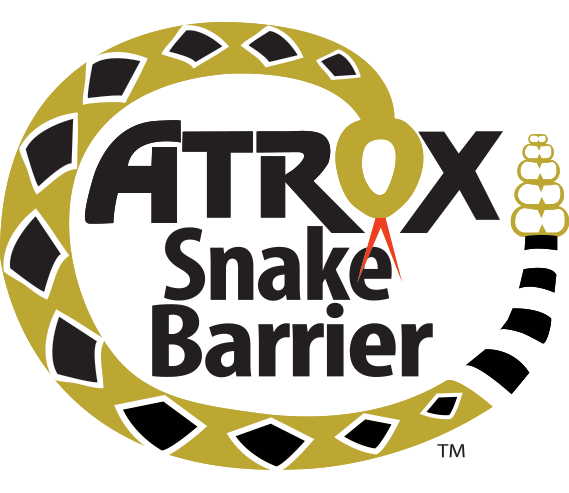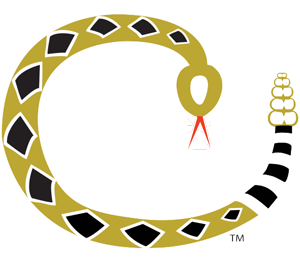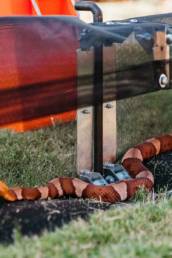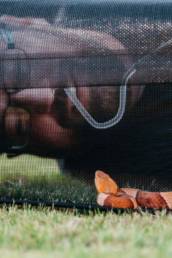A Herpetologist’s Opinion
The Atrox Snake Barrier, How It Works And Why It Works?
Because of my many years working with, and observing venomous and non-venomous snakes in the wild and in captivity, the fine folks at Atrox Snake Barrier asked me to test their barrier with living snakes of various species to assess how it works, why it works, and to find any places where it could be improved.
During my trials, I released rattlesnakes, copperheads, water moccasins, rat snakes, water snakes, coachwhips, coral snakes, and many others, both wild and captive, and of various sizes near the barrier, and observed their interactions with it. To put it bluntly: IT WORKS. This may seem a simplistic observation to make at first. You might think, “Well of course it works. You wouldn’t be selling it if it didn’t work, right?” Not necessarily. There are dozens of anti-snake products on the market that absolutely do not work at all, snake repellant, for example. Despite this fact, people spend millions of dollars on them every year and the companies who make them keep right on selling them. You will not find a single herpetologist who would put their stamp of approval for the efficacy of snake repellant, but I, and others will heartily endorse this product. If properly installed, the Atrox Snake Barrier will successfully exclude snakes, and direct them away from your property.
How Does The Snake Barrier Work?
When I first saw the barrier, I must admit, I was skeptical. The first thing you notice about it is it is very SHORT. At around 10 inches tall, the barrier should be a simple speed bump to any snake that can climb, and any non-climbing snake of 10 inches or longer, but it stops them in their tracks. The reason for this is twofold.
1. Snakes are dumb. Now, I know that will make some people mad to hear, but believe me when I say I love snakes, and I have an endless supply of respect for them, but they are not big problem solvers. The reason for this is an evolutionary one. Any life form on this planet is able to do just about exactly what it needs to do to survive. With some notable exceptions, animals don’t spend energy on things that aren’t necessary for survival. If they did, they would run the risk of not surviving. Whales don’t do algebra, and I can’t hold my breath for an hour. Cave fish that live in the dark quickly evolve the loss of their ability to see, and snakes don’t do brain games. Every problem that a snake faces is solved through instinct, so while a chimpanzee may be able to fashion tools to dig termites out of a tree hole, a snake will never figure out a way around the barrier, or at least if they can, it would take a lot more interactions and time around the barrier than any snake would realistically get.
2. The design actually uses the snakes’ instincts against them. By this I mean, when the snake encounters the barrier, he does what his instincts tell him to do, and this results in him being ushered away from your property, and back into the wild where he belongs.
Here Is How The Snake Barrier Works?
The design of the C-channel at the top of the barrier creates an overhang. This overhang is a physical barrier that prevents long snakes from lifting up and finding their way over the barrier. When a large snake encounters the lower barrier, they are blocked, and they basically have three choices: Go left, go right, or go up. If they choose up, they will have to bend their body backward at an uncomfortably acute angle to traverse the C-Channel. Once they reach the outer edge, they are greeted with the overhang. It is simply not physically possible for any species I have tested on the barrier to bend over backwards and cross the upper overhang. What is really interesting to me is, I almost never observed a snake that went up! I was not expecting this at all, but it seems like they can see and sense the barrier above them, and they don’t even try to go over it. They were much more likely to attempt to push through the lower barrier in front of them than they were to try to go over it, and 100% of test subjects eventually turned left or right, and left the area, moving away from the protected space. The overhang seems to provide a second instinct-busting ability that wasn’t apparent until we tested it. Theoretically, big snakes such as rat snakes, racers and coachwhips could easily lift up the front part of their body and cross the barrier as they approach it. They are only trapped, if they make it into the inner wall under the C-channel, so what keeps them from doing it? Well, the answer, again, is instinct. When a snake is out in the open, there is one thing he wants more than anything else, and that is to HIDE. Because of the shape, size, and color of the overhang, the snake perceives it as a place to take cover and find shade. This draws them, using their instinct, into the inner barrier where they are trapped, and forced to move left or right and away from the protected area. The importance of this aspect of the barrier was really driven home when I put my pal Brutus, the giant western diamondback on the INSIDE of the protected area, and let him approach the barrier where there was no C-channel overhang. We had put Brutus in front of the barrier dozens of times that day to film and photograph him, and he had never, not even once, tried to cross over it.
You can see a video of Brutus and the Barrier on our Vimeo channel. When I put him inside the barrier, he crawled toward it and over it like it wasn’t there on the FIRST TRY. I believe this is because there was no overhang beckoning him to take shelter below it. To me, this is the feature that really sets the Atrox Snake Barrier System apart from all others: It lets snakes out! If you erect the fence, any snake that is already in the protected area can easily cross the barrier back into the wild, never to return. This simple, unobtrusive, low profile system has an ingenious design that stops snakes and sends them safely back into the
Final Thoughts On The Snake Barrier
Although it isn’t necessarily designed and marketed to do so, this barrier also has the potential to dissuade or even stop a variety of other creatures, and redirect them into nature. These include toads and small frogs, turtles, alligators (up to a certain size, of course) lizards, large terrestrial insects, tarantulas, salamanders, and a variety of other small animals. We will be conducting specific tests on some of the animals mentioned here in the future, and I’m sure we’ll post video results for your viewing pleasure. While most people are thinking, “Great! I can keep creepy crawlies out of my pool!” I’m thinking, “This is a conservationist’s dream!” Let’s face it, most people kill snakes when they meet them. It’s just what people think you’re supposed to do with a snake. While it is MUCH more dangerous to attempt to catch or kill a snake than it is to just leave it alone, people don’t hesitate to kill them anyway. As a person who loves snakes, and wants them to continue to be part of our world for as long as possible, this barrier is a godsend! Now both people and snakes can be protected from each other. The barrier keeps snakes in the wild where they belong, and out of your protected space. As a herpetologist who has seen the barrier in action countless times, I highly recommend it, and suggest you give it a try, whether you’re trying to keep garter snakes away from your goldfish pond, or rattlesnakes away from your back porch.
Dan Krull
– Herpetologist




